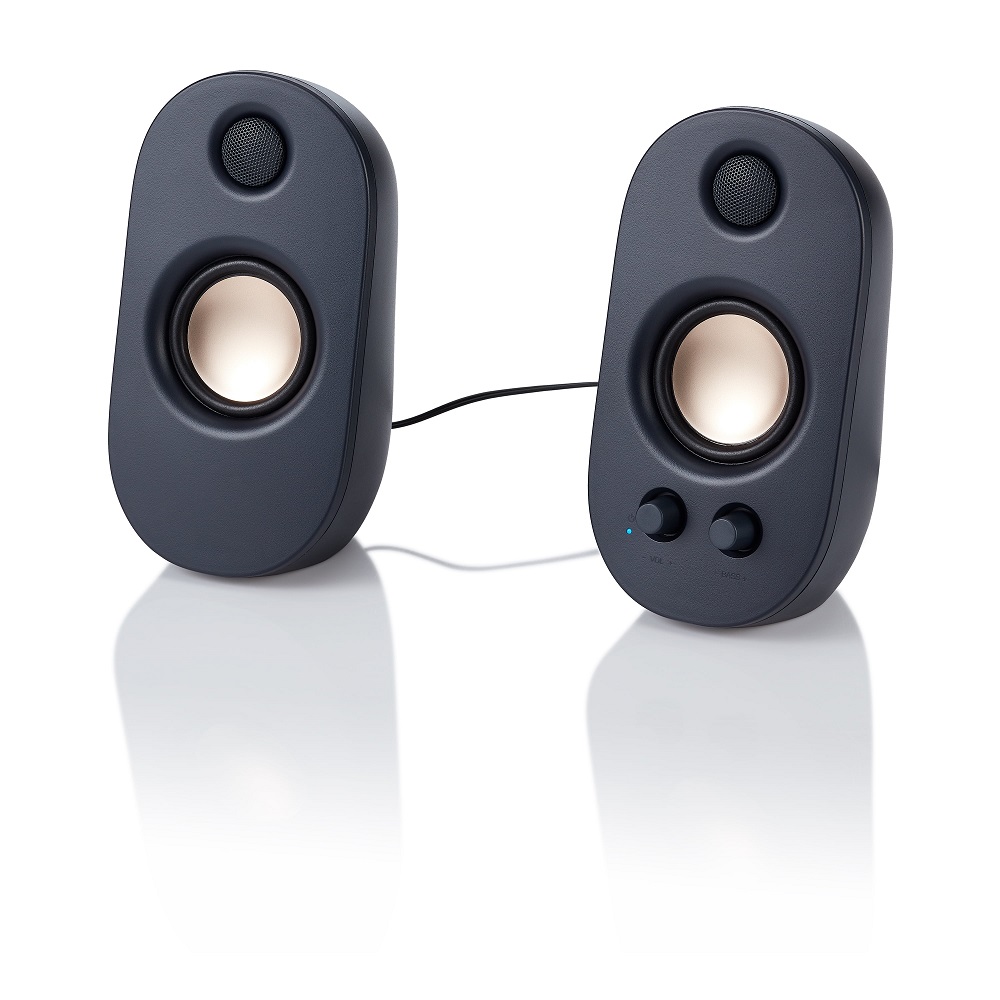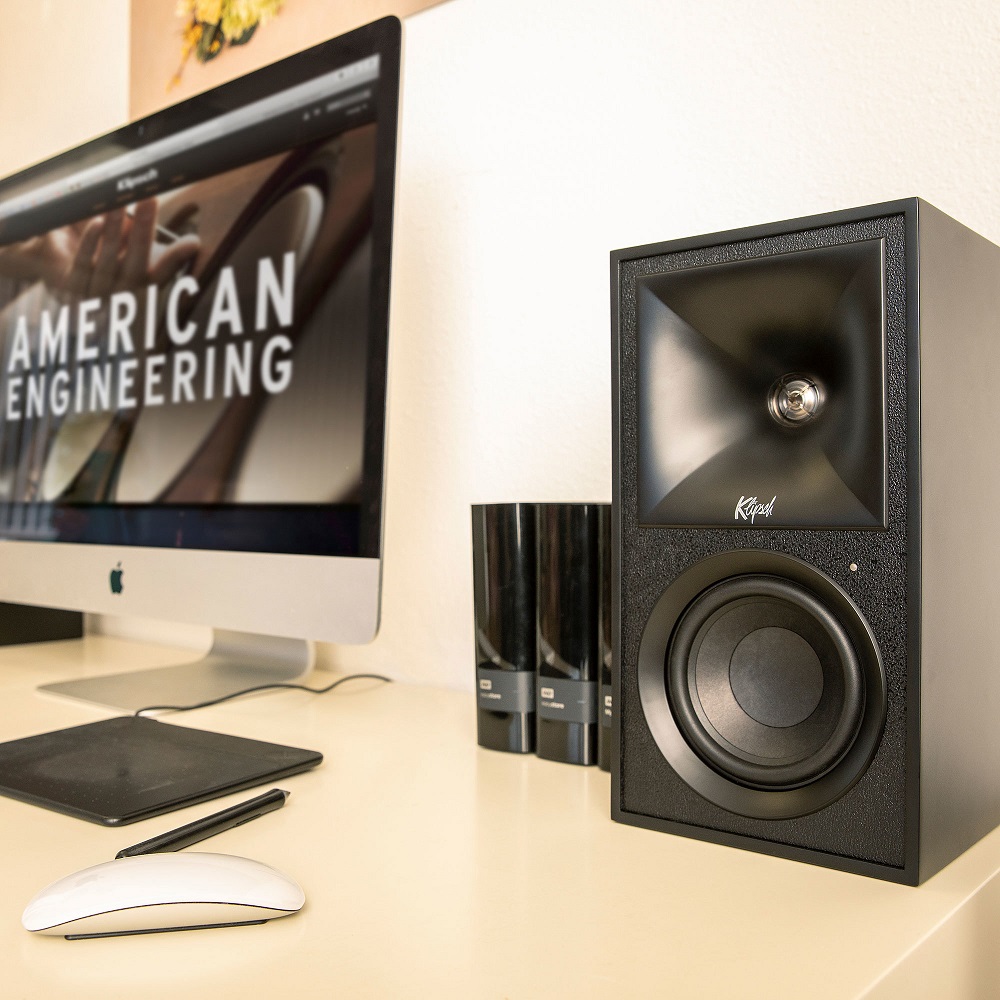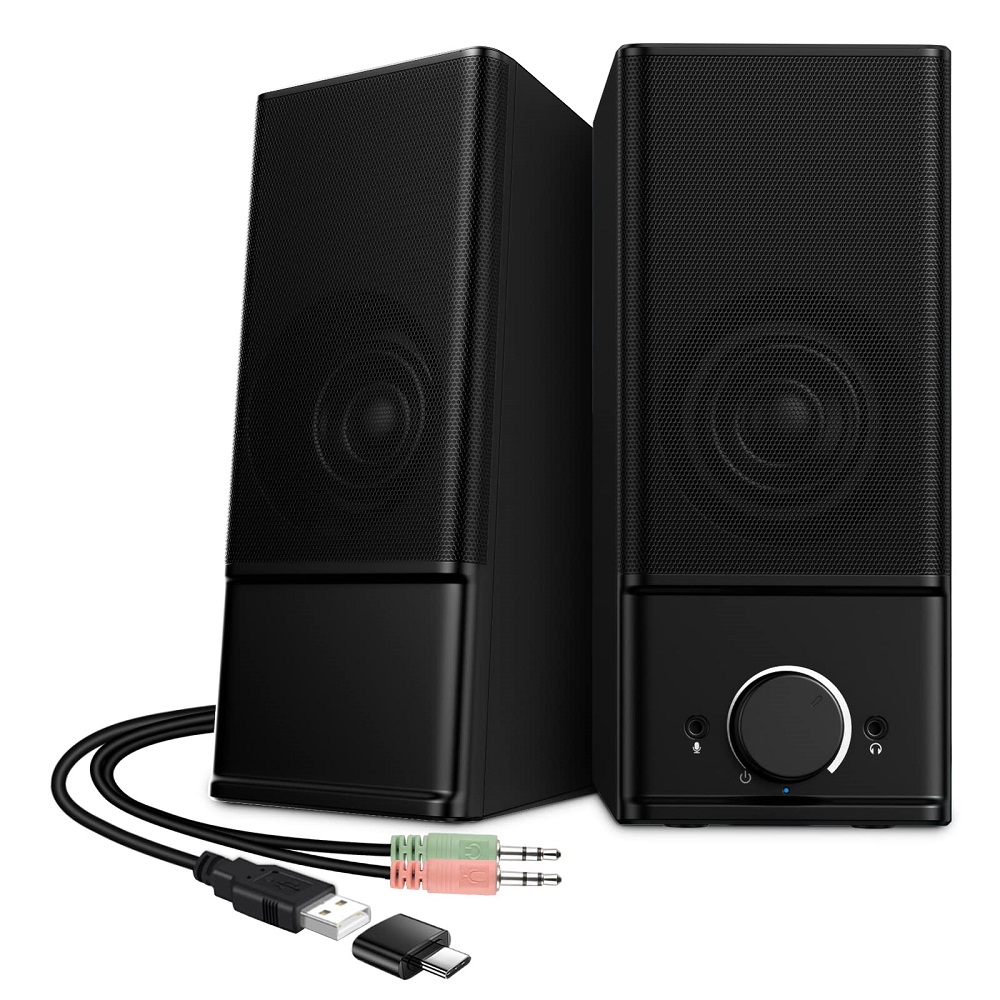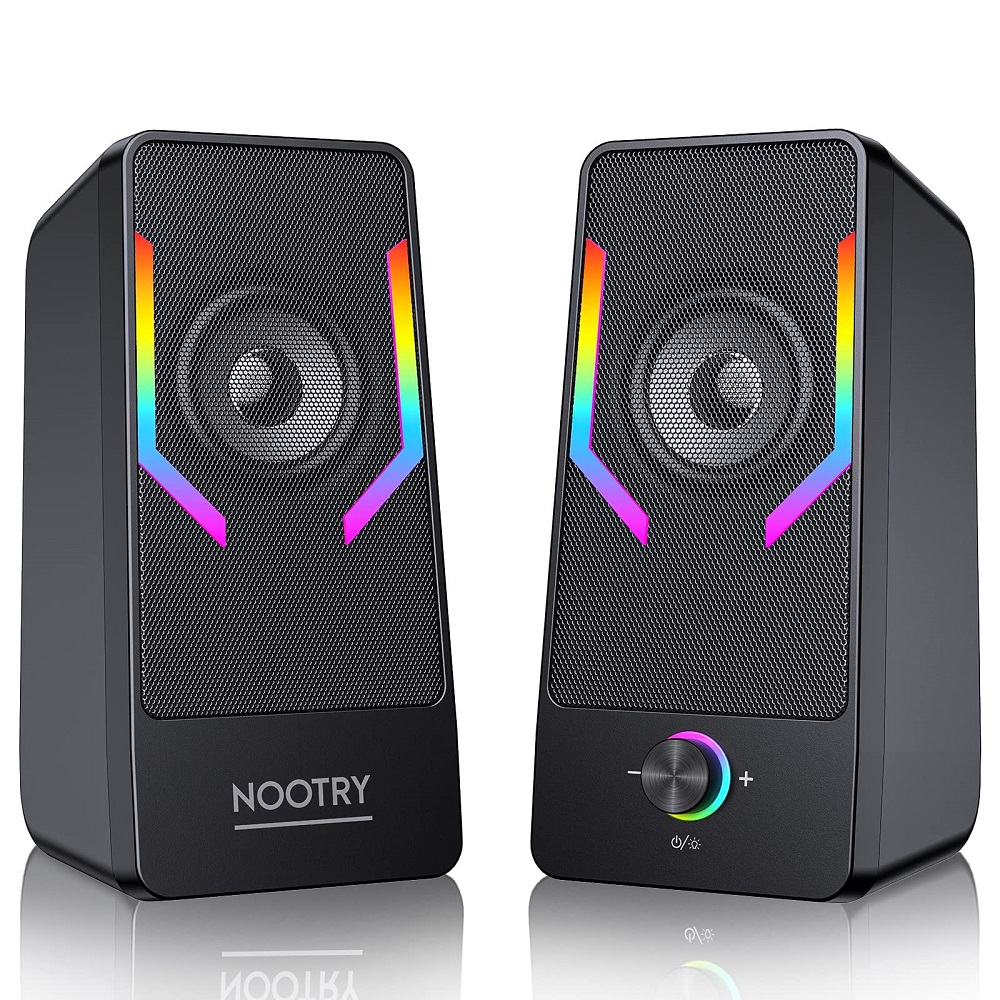Types of Audio Connections for Computers
Ensuring your computer’s audio connects to your speakers correctly is crucial for optimal sound experience. Let’s delve into the common types of audio connections you might encounter when setting up your speaker systems.
Desktop PC Audio Jacks
Most desktop computers come equipped with a dedicated line level audio jack. This jack is typically color-coded green and may include a symbol to indicate its function. If you struggle to locate it, the owner’s manual should provide the necessary guidance. For optimal performance, use this jack to connect your speakers or amplifier.
Laptop Audio Outputs
Unlike desktops, laptops often lack a dedicated line level output. Instead, you can usually use the headphone jack for speaker connection. It is a standard 3.5mm stereo connector that services most headphones and external speakers. Some laptops also have built-in Bluetooth for wireless connections, expanding your audio setup options.
Bluetooth Connectivity Options
Bluetooth provides a convenient, wireless method for connecting speakers to your computer. This is especially common in modern laptops but is not always present in desktop PCs. If your desktop lacks Bluetooth, consider purchasing a USB Bluetooth adapter. These adapters are typically inexpensive and can add wireless audio capabilities to your computer setup.

Setup Guide for Various Speaker Systems
Creating the perfect audio setup with your computer can enhance your listening experience. Let’s dive into different ways to connect speaker systems to your computer.
Connecting Passive Speakers to a Computer with an Amplifier
To amplify the sound from your passive speakers, you’ll need an amplifier. First, connect a 3.5mm headphone jack to the computer’s line out. Use an adapter cable to link it to the amplifier’s RCA inputs. Then, attach your speakers to the amplifier. Ensure you match the positive and negative wires correctly. Test the sound but remember to check your computer’s audio settings if there’s no sound.
Using Powered Speaker Sets
Powered speakers are simpler to set up. They often come with a 3.5mm plug. Connect this to your computer’s audio output jack. Some use USB for power. Once connected, test the sound. If needed, adjust your computer’s audio settings to ensure proper output.
Configuring Computer to Home Receiver Setup
For an immersive sound experience, connect your computer to a home receiver. Use a 3.5mm to RCA adapter to connect the computer’s audio jack to the receiver’s AUX input. Power on the receiver and select the correct input mode. Test the sound; adjust settings if needed.
Establishing Bluetooth Connections with Speakers
Bluetooth offers a cable-free setup. Pair your computer’s Bluetooth with your speakers or use a USB Bluetooth adapter for non-Bluetooth desktops. Follow specific pairing instructions. Ensure the Bluetooth is enabled on your computer and the audio device is selected for sound output. Enjoy your music wirelessly once connected.
Troubleshooting Common Sound Issues
Experiencing problems with sound can be frustrating when connecting speakers to a computer. Below are solutions to some of the most common sound issues users might face.
What to Do When There’s No Sound
When your speakers or headphones fail to produce sound, follow these steps. First, check if they are properly connected to the computer. Verify the volume is not muted or too low, both on the speakers and the computer settings. Inspect the audio jack for any visible damage. If using a USB or Bluetooth device, ensure it is selected as the default sound device in your computer’s audio settings. If all fails, try restarting the computer or use another speaker or headphones to test if the issue lies with the computer or the audio device.
Addressing Ground Loop Noise Problems
A persistent hum or buzz in your speakers is often an electrical ground loop noise. To solve this, try plugging your computer and audio equipment into the same power outlet. If using an amplifier, test different grounding points on the computer’s case. Also, a ground loop isolator can be used to break the current loop causing the noise. For connections that use 3.5mm audio jacks, ensure the cable is fully inserted and secure. If Bluetooth is an option, it may eliminate the noise since it doesn’t rely on cable connections. If issues persist, consult your equipment’s manual or an audio specialist.
Audio Enhancements and Additional Tips
To get the best audio performance from your computer, small tweaks and upgrades can make a big difference.
Maximizing Sound Quality with Proper Settings
Settings matter when it comes to sound quality. Here’s what to do:
- Ensure the audio output is set correctly in your computer’s sound settings.
- Select the highest quality audio format available in the control panel.
- Adjust the equalizer settings for a balanced sound or to match your preference.
- Consider external software for audio enhancements, like sound boosters or virtual surround sound.
Recommendations for Mini Amplifiers
A mini amplifier can boost your sound volume and clarity. Here are some guidelines:
- Look for an amplifier with 5-10 watts per channel for small to medium rooms.
- Choose amplifiers that have good reviews and include a power supply.
- Amplifiers with fewer components, like class D models, are often more energy-efficient and cooler running.
Dealing with Electrical Hum Through Speakers
Electrical hum, or ground loop noise, can be annoying. To fix it, try these steps:
- Connect all your audio gear to the same power strip to minimize potential ground loop problems.
- Experiment with different grounding points on your computer’s case using a jumper wire.
- Optical or Bluetooth connections can help you avoid ground loops since they don’t rely on direct electrical connections.
- A ground loop isolator can also be installed between your computer and the amplifier to reduce noise.
Advanced Speaker Connection Techniques
Streaming Music Through External Speakers
If you enjoy streaming music, enhancing your setup with external speakers can elevate your audio experience. To stream music from your computer, consider these simple steps:
- Choose Your Speakers: Pick external speakers that fit your sound quality desires and space requirements.
- Decide on the Connection Type: Wired options typically offer stable audio quality. Wireless options add convenience.
- Connect Your Device: If wired, use a 3.5mm audio cable or RCA adapter to connect. For wireless, you’ll need to enable Bluetooth on both the computer and the speakers.
- Adjust Your Settings: Ensure your computer selects the right output. Check the volume and sound quality settings.
- Enjoy the Music: Play your tunes and adjust the speaker placement for the best sound.
Remember to keep your systems updated to maintain compatibility and quality.
Splitting Audio Channels for Advanced Setups
Creating a surround sound or targeted audio experience sometimes requires splitting audio channels. For sound aficionados or those seeking a custom audio setup, this can be key:
- Identify Your Needs: Determine if you need to isolate audio channels for speakers located in different areas.
- Acquire a Splitter: Obtain a 3.5mm splitter to send audio to multiple speakers. They’re found in most electronic stores.
- Check Your Cables: Ensure you have quality cables to prevent loss of sound quality.
- Test the Setup: After connecting, test different audio tracks to ensure correct channel output.
- Fine-Tune: Adjust your computer’s balance and fade settings to perfect the distribution of sound.
This advanced technique can help create an immersive, room-filling audio experience. When implemented properly, it can significantly improve your listening enjoyment.
Product Recommendations and Reviews
Finding the right audio equipment is vital for a superior sound experience when connecting speakers to your computer.
Suggested Amplifiers for Different Budgets
When shopping for an amplifier, consider these suggestions fitting various budgets:
- Under $50: Look for simple, compact mini amplifiers with basic features. They may have less power but are suitable for small rooms.
- $50 to $100: Choose amplifiers that offer better power output and quality. Look for features like Bluetooth connectivity or enhanced audio controls.
- Above $100: Aim for higher-end amplifiers with advanced features like multiple inputs, higher wattage, and refined sound quality. Brands like Yamaha and Sony offer reliable choices.
Always read reviews and check product specs to ensure you’re getting the best value for your money.
Evaluating Bluetooth Adapters and Receivers
Bluetooth adapters and receivers add wireless capability to your setup. Here’s how to evaluate them:
- Compatibility: Ensure the device is compatible with your computer and speakers.
- Range: A good Bluetooth device should have a reliable range, preferably over 10 meters.
- Audio Quality: Some adapters may compress audio, so look for ones that support high-quality codecs like aptX.
- User Reviews: Check online reviews to learn about the device’s performance and reliability.
- Price: While you don’t need to overspend, investing in a slightly higher-priced option might offer a better audio experience.
By considering the factors above, you will find a product that seamlessly integrates into your audio system.


